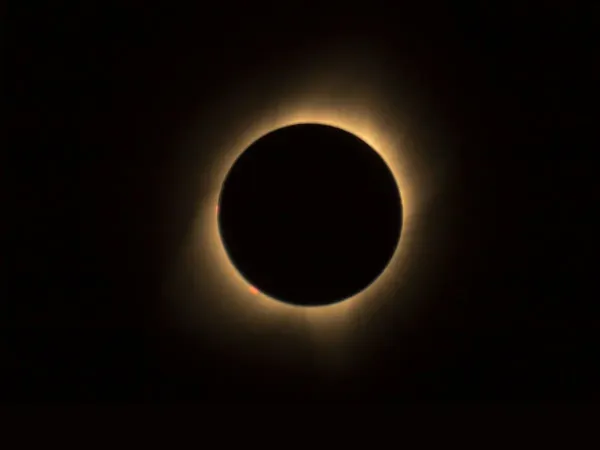
The Unforgettable Day India Turned Dark: Reliving the Longest Solar Eclipse of the 21st Century
2025-09-21
Author: Daniel
A Celestial Phenomenon Like No Other
On July 22, 2009, India found itself under the spell of one of nature's most mesmerizing displays: the longest total solar eclipse of the 21st century. As the Moon’s shadow briskly traversed the nation, countless cities plunged into an extraordinary darkness that transported millions from daylight to an ephemeral night. Lasting an astounding six minutes and thirty-nine seconds, this eclipse became an unforgettable encounter for both star-gazers and ordinary citizens alike.
Understanding Solar Eclipses: The Types You Need to Know
Solar eclipses can be categorized into three types, each offering a unique visual treat for spectators: 1. **Total Solar Eclipse:** The Moon completely obscures the Sun, revealing invisible layers like the Sun's corona, transforming day into night. 2. **Partial Solar Eclipse:** Only a portion of the Sun is hidden, crafting a charming crescent silhouette in the sky. 3. **Annular Solar Eclipse:** The Moon appears smaller than the Sun, forming a magnificent 'ring of fire' around its edges.
The Journey Through India: A Path of Darkness
The path of totality began in western India, near the Gulf of Khambhat in Gujarat, making its way across populous cities such as Surat, Indore, Bhopal, Varanasi, and Patna before sweeping eastward through Nepal, Bangladesh, and even into China. While northern and eastern regions of India enjoyed the full eclipse, many cities experienced a partial shadow play. In Varanasi, along the sacred Ganges River, massive crowds gathered at dawn—not just to watch the eclipse, but also to perform traditional rituals a few moments before darkness enveloped them, heightening the spiritual atmosphere.
A Moment Defined by Unique Celestial Alignments
What distinguished this eclipse from all others was an extraordinary alignment of celestial bodies. The Moon was exceptionally close to Earth, appearing larger and perfectly positioned to block the Sun. Meanwhile, Earth was at aphelion, its furthest point from the Sun, making the latter seem slightly smaller in the sky. This rare interplay allowed the Moon to envelop the Sun longer than typical eclipses.
The Legacy of July 22, 2009: A Cultural Intersection
The geometry of the eclipse path, coupled with these unique orbital circumstances, made this celestial event one that would not be repeated for generations. While other eclipses are forecast for the future—like the one scheduled for August 2, 2027—none are expected to eclipse the sheer grandeur of July 22, 2009, for Indian soil. The brief darkness of that day remains emblazoned in the memories of those who witnessed it, intertwining science, culture, and spirituality into a moment of breathtaking cosmic significance.



 Brasil (PT)
Brasil (PT)
 Canada (EN)
Canada (EN)
 Chile (ES)
Chile (ES)
 Česko (CS)
Česko (CS)
 대한민국 (KO)
대한민국 (KO)
 España (ES)
España (ES)
 France (FR)
France (FR)
 Hong Kong (EN)
Hong Kong (EN)
 Italia (IT)
Italia (IT)
 日本 (JA)
日本 (JA)
 Magyarország (HU)
Magyarország (HU)
 Norge (NO)
Norge (NO)
 Polska (PL)
Polska (PL)
 Schweiz (DE)
Schweiz (DE)
 Singapore (EN)
Singapore (EN)
 Sverige (SV)
Sverige (SV)
 Suomi (FI)
Suomi (FI)
 Türkiye (TR)
Türkiye (TR)
 الإمارات العربية المتحدة (AR)
الإمارات العربية المتحدة (AR)